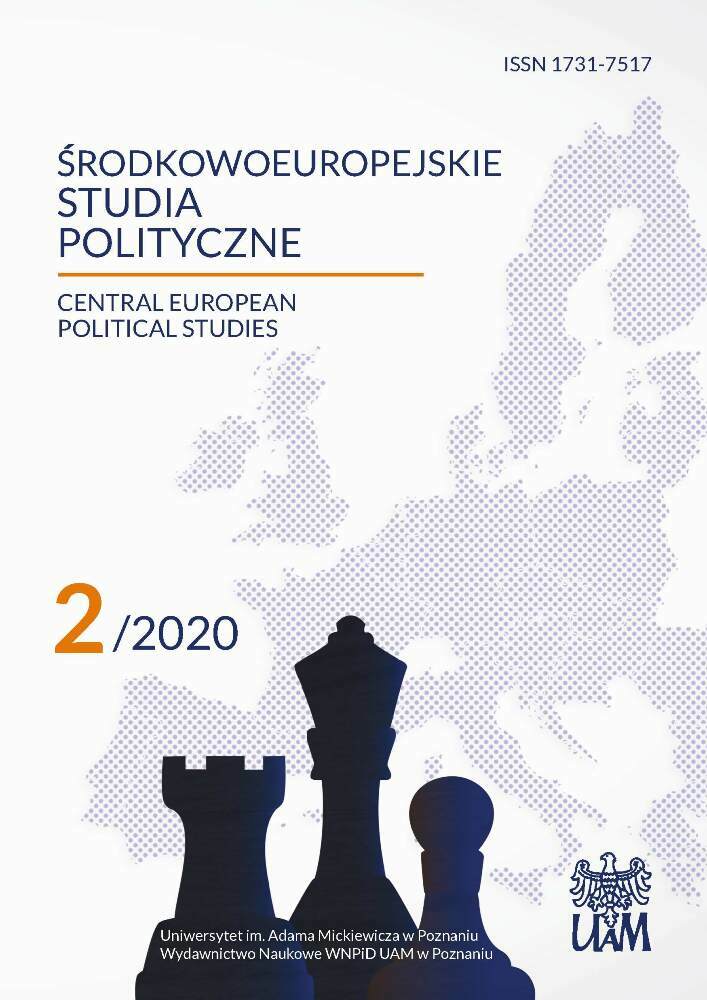Abstrakt
Celem serii czterech badań eksploracyjnych i konfirmacyjnych przeprowadzonych w latach 2009, 2011, 2015 i 2017 była identyfikacja struktury postrzegania elektoratów partii politycznych i opracowanie narzędzia do pomiaru tej struktury. Ustalono, że elektoraty partii politycznych są postrzegane przez pryzmat trzech wymiarów osobowości (Uczciwość, Konfliktowość i Podatność na manipulację), światopoglądu i ideologii (Konserwatyzm, Lewicowość vs. Prawicowość) oraz wymiaru oceniającego (Zacofanie vs. Nowoczesność). W badaniach potwierdzono równoważność konfiguracyjną i metryczną struktury postrzegania elektoratów różnych partii oraz ich wartość w wyjaśnianiu preferencji wyborczych. Opracowany model strukturalny oraz walory psychometryczne kwestionariusza otwierają nowe możliwości systematycznych badań empirycznych uwarunkowań zachowań wyborczych.
Bibliografia
Aaker J. L. (1997), Dimensions of Brand Personality, „Journal of Marketing Research”, 34(3), ss. 347–356.
Aguirre-Rodriguez A., Bosnjak M., Sirgy M. J. (2012), Moderators of the self-congruity effect on consumer decision-making: A meta-analysis, „Journal of Business Research”, 65(8), ss. 1179–1188.
Angleitner A., Ostendorf F., John O. P. (1990), Towards a taxonomy of personality descriptors in German: A psycho-lexical study, „European Journal of Personality”, 4(2), ss. 89–118.
Campbell D. E., Green J. C., Layman G. C. (2011), The party faithful: Partisan images, candidate religion, and the electoral impact of party identification, „American Journal of Political Science”, 55(1), ss. 42–58.
Caprara G. V., Zimbardo P. G. (2004), Personalizing politics: a congruency model of political preference, „American Psychologist”, 59(7), ss. 581–594.
Eysenck H. J. (1991), Dimensions of personality: 16, 5, or 3? Criteria for a taxonomic paradigm, „Personality and Individual Differences”, 12(8), ss. 773–790.
Ferland B., Dassonneville R. (2019), Shifting parties, rational switchers: Are voters responding to ideological shifts by political parties?, „Party Politics”, 1–11. DOI: 10.1177/1354068819829207.
Goldberg L. R. (1981), Language and individual differences: The search for universals in personality lexicons, „Review of Personality and Social Psychology”, 2(1), ss. 141–165.
Gorbaniuk O., Kusak K., Kogut A., Kustos M. (2015), Dimensions of political party „personality” perception, „Journal of Political Marketing”, 14(1), ss. 35–63.
Gorbaniuk O., Razmus W., Slobodianyk A., Mykhailych O., Troyanowskyj O., Kashchuk M., Drako M., Dioba A., Кolisnyk L. (2017), Searching for a Common Methodological Ground for the Study of Politicians’ Perceived Personality Traits: A Multilevel Psycholexical Approach, „Journal of Research in Personality”, 70(4), ss. 27–44.
Guzmán F., Paswan A. K., Van Steenburg E. (2015), Self-referencing and political candidate brands: A congruency perspective, „Journal of Political Marketing”, 14(1–2), ss. 175–199.
Hu L., Bentler P. M. (1999), Cutoff criteria for fit indexes in covariance structure analysis: Conventional criteria versus new alternatives, „Structural Equation Modeling”, 6(1), ss. 1–55.
Kolańska M., Gorbaniuk O., Wilczewski M. (2020, w druku), From exploratory research to structural models: A multilevel lexical approach to studying the image of marketing objects, „East European Review”, 4.
Kwiatkowska A., Cześnik M., Żerkowska-Balas M., Stanley B. (2016), Ideologiczna treść wymiaru lewica–prawica w Polsce w latach 1997–2015, „Studia Socjologiczne”, 4(223), ss. 97–129.
Mayer S. J. (2019), Ideological congruency, social group linkage or the best-evaluated party of all? Why partisans identify with a political party, „Quality & Quantity”, 53(1), ss. 297–313.
Miller A. H., Wlezien C., Hildreth A. (1991), A reference group theory of partisan coalitions, „The Journal of Politics”, 53(4), ss. 1134–1149.
Osgood Ch. E., Tannenbaum P. H. (1955), The Principle of Congruity in the Prediction of Attitude Change, „Psychological Review”, 62 (1), ss. 42–55.
Powell G. B. (2018), Ideological Congruence: Illusion or Imperfection?, „Legislative Studies Quarterly”, 43(1), ss. 21–32.
Saucier G., Srivastava S. (2015), What makes a good structural model of personality? Evaluating the Big Five and alternatives, w: APA Handbook of Personality and Social Psychology, red. M. Mikulincer, P. R. Shaver, t. 4, Washington, DC.
Schneider H., Ferié F. (2015), How to Manage a Party Brand: Empirical Perspectives on Electoral Probability and Internal Conflict, „Journal of Political Marketing”, 14(1–2), ss. 64–95.
Sirgy M. J. (1982), Self-concept in consumer behavior: A critical review, „Journal of Consumer Research”, 9(3), ss. 287–300.
Supphellen M. (2000), Understanding core brand equity: guidelines for in-depth elicitation of brand associations, „International Journal of Market Research”, 42(3), ss. 319–338.
Tajfel H., Turner J. C. (1979), An integrative theory of intergroup conflict, w: The Social Psychology of Intergroup Relations, red. W. G. Austin, S. Worchel, Brooks/Cole, Monterey.
Wattenberg M., Miller A. H. (1981), Decay in Regional Party Coalitions, w: Party Coalitions in the 1980’s, red. S. M. Lipset, Institute for Contemporary Studies, San Francisco.


